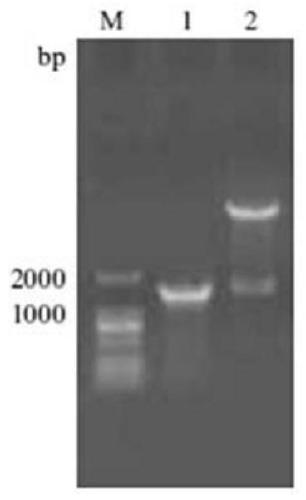Anti-human Legumain protein monoclonal antibody, hybridoma cell strain LGMN-2 and applications thereof
一种杂交瘤细胞株、LGMN-2的技术,应用在抗酶免疫球蛋白、生物化学设备和方法、仪器等方向,能够解决应用还属空白、没有检测方法等问题,达到好特异性的效果
- Summary
- Abstract
- Description
- Claims
- Application Information
AI Technical Summary
Problems solved by technology
Method used
Image
Examples
Embodiment 1
[0031] Embodiment 1, prepare the monoclonal antibody of anti-human Legumain protein
[0032] 1. Preparation of Legumain antigen
[0033] 1) Obtaining the sequence of the Legumain gene
[0034] The gene encoding Legumain is located on human chromosome 14 (14q32.12), and its sequence number in the NCBI database is CCDS: CCDS9904.1. The plasmid pLEXSY-sat2-hLGMN carrying the human Legumain gene was donated by Dr. Elfriede Dall from the University of Salzburg, Austria. The non-patent literature that has recorded the eukaryotic expression plasmid pLEXSY-sat2-hLGMN is E. Dall and H. Brandstetter, Activation of legumain involves proteolytic and conformational events, resulting in a context-and substrate-dependent activity profile., Acta Crystallogr Sect F Struct Biol Crystal Commun. 2012 Jan 1;68(Pt 1):24–31.
[0035] 2) Construction and identification of recombinant plasmids
[0036] In order to make human Legumain secreted outside the cell after expression, a tissue-type plasmin...
PUM
 Login to View More
Login to View More Abstract
Description
Claims
Application Information
 Login to View More
Login to View More - R&D
- Intellectual Property
- Life Sciences
- Materials
- Tech Scout
- Unparalleled Data Quality
- Higher Quality Content
- 60% Fewer Hallucinations
Browse by: Latest US Patents, China's latest patents, Technical Efficacy Thesaurus, Application Domain, Technology Topic, Popular Technical Reports.
© 2025 PatSnap. All rights reserved.Legal|Privacy policy|Modern Slavery Act Transparency Statement|Sitemap|About US| Contact US: help@patsnap.com



